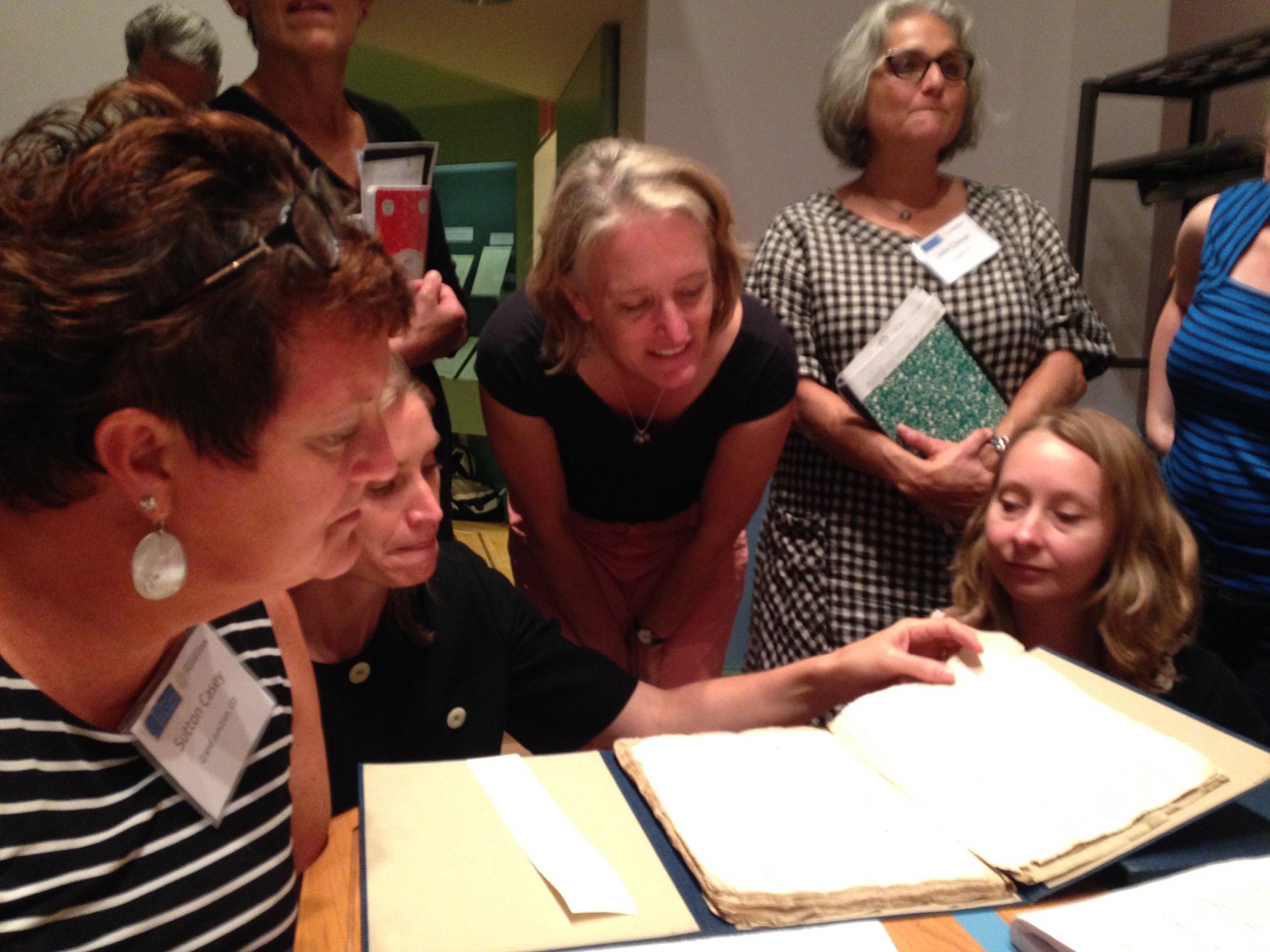“But, soft! what light through yonder window breaks? It is the east, and Juliet is the sun.”
These sweet lines are in good old iambic pentameter: da DUM da DUM da DUM, steady as she goes, five weak beats followed by five strong ones — just like the beating of Romeo’s smitten heart.
Now try this: “Double, double, toil and trouble, fire burn and cauldron bubble.” It’s a totally different rhythm — insistent, urgent, leaning forward to grab you — as befits the three witches who pull ghostly strings in “Macbeth.”
“There’s a reason for that,” said Heather Gordon. “Something important is happening. In Shakespeare, the meanings are here, there, everywhere. They’re things you wouldn’t notice if you’re just struggling to understand the language.”
Decoding the underlying rhythms of Shakespeare’s lines is the kind of analysis that made Gordon’s recent visit to Brooklyn, N.Y., so richly rewarding, she said.
Gordon has taught English for 20 years, she said, and loves presenting Shakespeare’s beautiful sonnets to her students — but she’s always found the plays frankly intimidating, she said. But now that she’s also teaching drama at Woodland High School, Gordon vowed to get comfortable with Shakespeare in his natural habitat: on stage.
So she finally applied for an educational outing that she’s long known about but never went after: the National Endowment for the Humanities’ ongoing summer teacher institutes — this one based at the Polonsky Shakespeare Center in New York City. Gordon wound up one of 25 high school teachers from across the nation whose ways were paid to spend two weeks this summer studying “Scholarship and Performance: A Combined Approach to Teaching Shakespeare’s Plays.”
The course brought in literary scholars and classically trained actors to explore Shakespeare’s language as well as the culture, history and politics of the world he wrote in. For example, she said, why did this English Renaissance poet set so many of his works in far-off places like ancient Greece, or Italy, or even Denmark?
Partly because he was drawing from historical sources and setting his stories where they came from, Gordon said — but perhaps more importantly, he was freer to comment on his own time and place if they were masked with foreign settings and historical eras.
Part of developing confidence with Shakespeare on stage was learning to “walk with it,” Gordon said — that is, taking your script and moving and gesturing while delivering your speech. Even if you don’t understand every word yet, she said, “you begin to feel the words and feel the room too. You start parsing out the different aspects of the speech as you move around.”
In the end, she said, everybody worked together to perform scenes from “Macbeth.” Gordon had a blast being one of those three weird witches, she said.
“It was super-empowering to feel I can get up on stage and do lines of Shakespeare myself,” she said. “This is an awesome opportunity for teachers. I am so jazzed to bring what I’ve learned back to my students.”
Bits ‘n’ Pieces appears Fridays and Saturdays. If you have a story you’d like to share, email bits@columbian.com.




